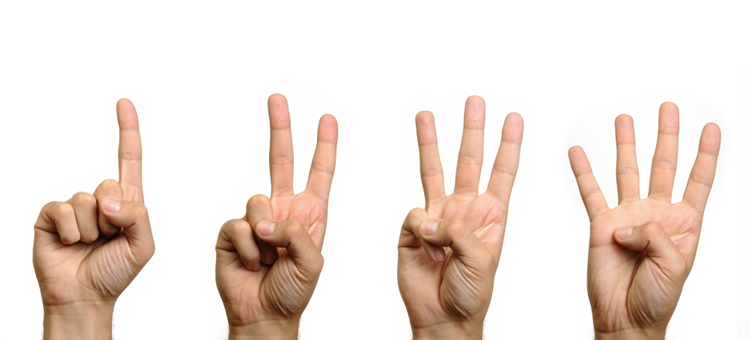
The lady came up to me at a conference I was speaking at and said: “Richard, we are thinking of starting a major gift program. We’re having a lot of internal discussion about what is minimally needed to start a successful program. What do you think?”
It was an easy answer for me because Jeff and I had thought and talked a lot about this very subject. And we had concluded that a fully-functional major gifts program needs four fundamental things in order to be successful:
- A meritorious cause – This is another way of saying a good cause – a cause that addresses a real societal need with believable solutions. In the commercial world, one would say “a meritorious product” to sell. You shouldn’t even think of starting a major gift program without a good cause. And it can’t be some thing that an authority figure or founder has decided would be nice to do. It has to be a program that addresses real need. By “real,” I mean that donors outside the organization would agree that the need is real – that it is something that needs to be taken care of. And by “believable solution” I mean that the solution the organization is presenting to address the need is believable. Take a look at your organization’s “solutions” and ask yourself: “Is this believable?” Most often it will be. But Jeff and I have happened upon quite a few that aren’t – and you know the donor is rolling her eyes when she hears about them.
- An effective development function in the organization – By effective, I mean that there is a fundraising philosophy in place that is donor-driven and values the donor as a partner (not just a source of cash); there is a clear donor acquisition program that brings new donors into the organization in a cost-effective manner; there is donor stewardship and cultivation program that keeps donors informed about how their giving is making a difference; there is a donor solicitation program that tells donors what else they can do to help and asks them to give; there are back office systems (data management, receipting, reporting) that support the fundraising effort; and there are leaders and managers in place who understand how fundraising works, how donors think and what they need. Essentially, this point is about having a cost-effective way of attracting and retaining donors. Just ask yourself the question. “Are we attracting donors in a cost-effective way? Are we retaining them as donors? And are we retaining their economic value over time and increasing it?” Jeff and I find that some folks want to make the fundraising or major gifts thing way more complex than just answering these basic questions. You don’t need to.
- A qualified MGO or staff person that handles major donors – Someone needs to relate to the donors. And it can’t be just anyone. It has to be someone who loves donors, loves the cause and is effective in communicating (verbal and written) with the donors. I can’t emphasize enough the “loves donors and loves the cause” bit. This can’t be just a job. It is about doing great things for the planet and its people. The person you have relating to donors needs to do this work effectively and with passion.
- The right donor – And, of course, without the donor in the equation, there can’t be a major gift program. And by “right” donor we mean one who wants to actually relate to you. Remember, most major donors do not want to relate personally. Jeff and I keep saying this over and over because it is such an important point to remember. Only one donor in 3 to 5 who give major gifts actually will relate to a MGO in a more personal way. So the MGO or staff person in the major gifts program must find the “right” donor to relate to. We bring this up repeatedly because every week – yes, that frequently – someone is either complaining about or getting impatient with how long it takes to qualify a full caseload of donors. It is difficult and it takes time – but the rewards are great.
Granted, there are a lot of other details that you will want to pay attention to, but don’t even get started with a new program unless you can deliver on these four.
Back to the lady at the conference. After I was done going through my four points, she said: “Well, to be honest, we don’t have our act together as a development department. In fact, there has been a lot of staff turnover. And our software system is out of date and we don’t have good donor history. Add to that the fact that our executive director is always pushing his pet projects for funding and ignoring what our very competent program people say.”
Well, there were two of the four “must haves” tossed completely out the window. A dysfunctional development department in disarray, and program that is mostly driven by the authority figure’s whims – not based on solid analysis of societal need and a program that addressed that need.
So I told her it would be a difficult to start a major gift program – that even if she could get by the development department that wasn’t working, she would still have the problem of trying to persuade donors to fund some programs that were more wish-based than need-based.
Now I know you might be saying that this good woman could just go ahead and find some major donors and secure funding from them. Yes she could, and she should. But that is not the same as launching a fully-functional major gift program, which is what she had asked me about.
Major gifts is one of the most under-utilized fundraising strategies in the non-profit world. Jeff and I are constantly amazed at the many organizations, large and small, that just do not have one. If you are in that situation, we encourage you to take the necessary steps to start one. Why? Because you have donors who would give more if they were cultivated and stewarded properly, and because major gifts is one of the most cost-effective fundraising strategies there is.
Richard
PS – If you’re planning to start or build a strong(er) major gift program, request our free White Paper that goes into lots of helpful detail: Starting a Successful Major Gift Program.





0 Comments